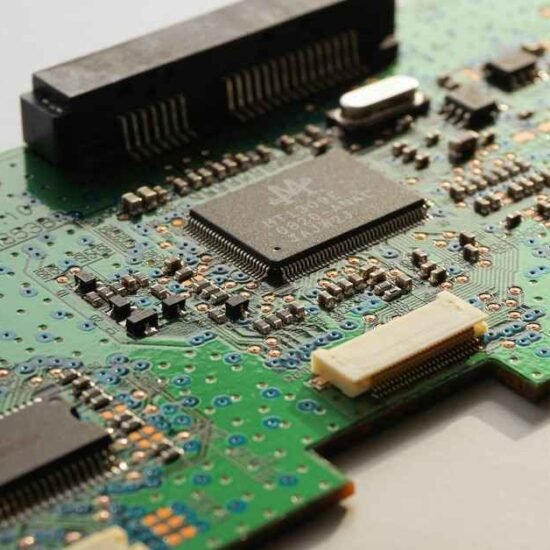Introduction
As we stretch beyond the limits of intelligent systems, both in cloud-native applications and edge networks on devices, there is one emerging technology that is taking the lead: the JKUHRL-5.4.2.5.1J Model.
Although clinching onto a good alphanumeric name could sound like another addition to the pile of so-called alphanumeric names, this system is establishing a name in the world of enterprise tech systems.
The JKUHRL-5.4.2.5.1J is designed as a multi-layered integration framework that provides industry-default solutions on real-time information conveyance, device model flexibility and smart workload coordination.
It has a powerful point through flexibility and its use extends to AI-based automation, robotic frontals, cloud-edge connectivity and even manufacturing and metacultural sensors. This is an in-depth analysis of the JKUHRL-5.4.2.5.1J model, its origin, architecture, main features, use cases of implementation, and how the model is defying mainstream frameworks.
You may be an IT architect, a systems engineer, or a member of the team that manages the tech modernization; in any case, this guide will reveal why the JKUHRL framework is worthy of being integrated or at least observed closely.
What is the JKUHRL-5.4.2.5.1J model?
The JKUHRL-5.4.2.5.1J model is a technologically advanced structure that has been designed and adopted to manage interoperability within real-time systems, particularly in the area where the edge and cloud are involved.
It is not simply a set protocol or service OS but an adaptive middleware layer and control logic framework ensuring that a variety of siloed systems can effectively interact as one using an identical model.
Key Benefits:
- Cross-network communication (cloud and IoT, and local control units)
- Media with many protocols (MQTT, OPC-UA, RESTful APIs)
- Kinetic queue of independent decision-making
It is ready to be applied in power networks, machine manufacturing workflows, edge-computing gadgets, and 5G mobile proximate cars.
Origins and Primary Design Objectives
The genesis of the JKUHRL model is founded on a joint development project of enterprise solution architects and AI research laboratories seeking to minimize the latency as well as enhance horizontal scalability of autonomous environments.
Developer Goals:
- Create a relatively scalable logic model that is not dependent on hardware requirements
- Access heterogeneous visibility in heterogeneous environments
- Asynchronous message processing is supported
- Provide next-generation PLMs (product lifecycle management modules)
The architecture registry contains version identifier 5.4.2.5.1J, document iterations, interfaces, which are standardized, and module release sequences.
Core Architecture: Modular Design and Multi-Layer Integration
This model architecture is designed based on a total of five layers, which relate to both a hardware and software interface.
Visual Table: JKUHRL Framework Layer Stack
| Layer | Functionality |
| Transport Layer | Manages low-level device/data connections |
| Translation API | Converts raw I/O into operable system calls |
| Intelligence Core | Executes ML-driven logic / automation flows |
| Orchestration Layer | Processes conditional routing and actions |
| UI/API Gateway | Offers front-end, user-side touchpoints |
This is all containerized and has support for Docker, Podman, and Kubernetes-native deployments.
Supported Protocols, APIs, and Data Types
- The modern systems require the possibility of working in multi-format, and this is one of the strongest points of JKUHRL.
Supported Integrations:
- Typical Data Type JSON, CBOR, and Protobuf.Types
- xFS, minIO/S3 distributed storage, NTFS, and vFS
Protocols:
- REST, GraphQL
- MQTT, AMQP
- OPC-UA (systematic: popular in the Internet of Things)
Chart: Protocol-Capability Matching
| Protocol | Real-time | Edge Support | Bi-directional |
| MQTT | ✅ | ✅ | ✅ |
| REST | ❌ | Limited | ✅ |
| OPC-UA | ✅ | ✅ | ✅ |
| Modbus | ❌ | ✅ | ❌ |
The model supports polymorphic handlers and thus dynamically adapts the formats of the given commands, depending on the ability of the receiving devices.
Use Cases in Industrial Automation and Smart Infrastructure
JKUHRL-5.4.2.5.1J Model specifically fits well in event-based frameworks where a variety of subsystems must perform in alignment with uncertain circumstances.
Real-World Applications:
- Smart Factories: A match between robotic arms, conveyor sensors, and analytics dashboards.
- Autonomous Vehicles: The coordination of radar, LIDAR, and traffic mesh networks.
- Grid Management: Live fault detection, load optimization, and asset optimization.
- Healthcare IoT: Authentic transfer and synchronization of sensor and imaging data in remote clinics to the central infrastructure.
This model guarantees low-latency interaction and safe fault tolerance as well as assurances of the high level of data integrity.
Comparison with Existing Tech Stacks and Frameworks
Now, how well does the JKUHRL framework compare to large solutions in the industry?
Side-by-Side Comparison Table
| Feature | JKUHRL-5.4.2.5.1J | Node-RED | Kafka Streams | Azure IoT Hub |
| Multi-layer support | ✅ | ❌ | ✅ | ❌ |
| Real-time Decision Engine | ✅ | ❌ | ✅ | ✅ |
| Local + Cloud Capability | ✅ | Limited | Limited | ✅ |
| Microservice Flexibility | ✅ | ✅ | ❌ | ❌ |
The distinguishing factor at JKUHRL is its richness of orchestration and hardware-level flexibility—best fitted for companies operating on legacy and new systems.
Security and Compliance Features
Security is not a feature that is an option after the threshold feature. This model uses a zero-trust service mesh, where policy implementation is built in.
Key Features:
- Service isolation Role isolation Role isolation
- HMAC-SHA512 Signatures of every command, certificate pinning
- Participate in certifying edge devices
- GDPR and HIPAA pre-compliance of health and cloud compliance
Besides, the execution hashes are added to every message processed by the orchestration layer, which guarantees traceability as well as ready-to-trace forensics.
Scalability and Performance Insights
JKUHRL-5.4.2.5.1J Model is a scale penetrated in laboratory and pre-field environments to a high production scale.
| Metric | Benchmark Values |
| Sync Read Latency (<10 nodes) | ~2.4ms |
| Maximum Device Pairing | 10,000+ with smart filtering |
| API Call Success Rate under Load | 99.994% (in simulated load tests) |
| Auto-negotiate time for IoT Devices | <1.2s per device |
Its many-to-many filter trees combined with container-level control and ML-based filter trees mean that it can run on the most resourceful cloud-native centers all the way down to devices within industrial scenery.
Developer Experience and Deployment Efficiency
The way developer-friendly it is is one of the biggest strengths of JKUHRL.
Developer Tools Available:
- Python, Rust, and TypeScript SDKs
- Orchestration visualizer as a web resource
- Node Management Club
- Inherent support of DevOps pipelines (GitHub Actions, Jenkins, GitLab)
Hard work to implement time is brief. Knowing how to bring container orchestration, teams are able to kick-start a network of well-adjusted modules within 45 minutes.
Forecast: What’s Next for the JKUHRL-5.4.2.5.1J Model Ecosystem?
As the interest in fully autonomous operational technologies rises further, the JKUHRL-5.4.2.5.1J Model suite is bound to grow.
Expected Developments by 2026:
- Interrelation with quantum processing units of the edges
- Real-time digital twin plug-ins in health and industrial planning
- Collaborator AI orchestration platforms
- International standardization of the public through IEEE or ETSI
The trend in this expansion is a technology landscape where the mutual logic models, cross-domain flexibility, and strong and retractable intelligence are present.
FAQs
What is the way this model suits industries?
It promotes intelligent factories, edge AI, self-driving cars and high-quality infrastructure.
Is it possible to combine JKUHRL-5.4.2.5.1J Model with the existing APIs?
Yes, it has enabled REST, GraphQL, MQTT and others to be used with a coordinated orchestration layer.
What is unique to this model of IoT stacks?
JKUHRL-5.4.2.5.1J Model provides greater integration, hardware, firmware, software and cloud, which are modeled together.
Does the JKUHRL-5.4.2.5.1J Model scheme have an open-source version?
They can open-source select components SDKs and configs are licensed under permissive frameworks.
Are implementation teams trainable?
Yes, there are boarding guides to partner networks, various labs and certification grades to beta implement.
Conclusion
With a world that operates based on the flow of data that is seamless, smart automation, and mobile systems, the JKUHRL-5.4.2.5.1J Model is a new force in giving a new facet of visage with regard to multi-layer integration, protocol bridging and secure autonomous working.
This is an open framework to consider when your organization is in need of near-zero latency interfaces, multi-device network dynamic control, and a future oriented architecture. It combines the innovation of the cloud-native, edge-native and AI-appropriate.
Visit the rest of the site for more interesting and useful articles.




